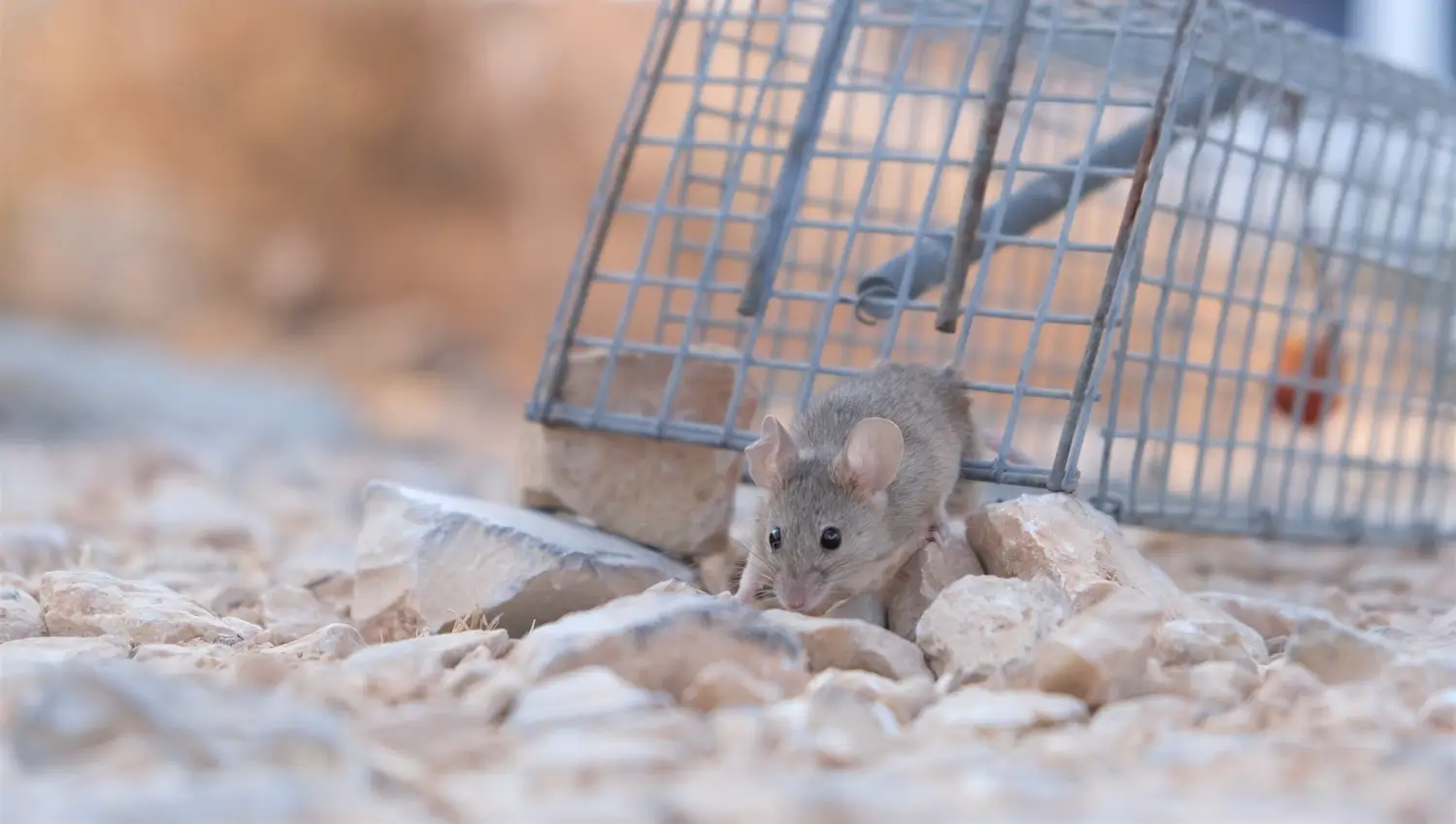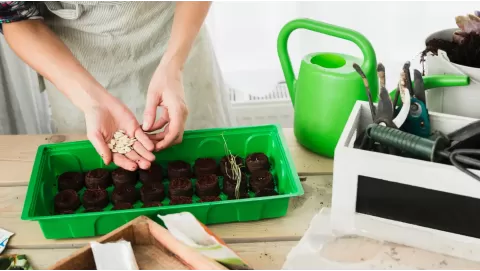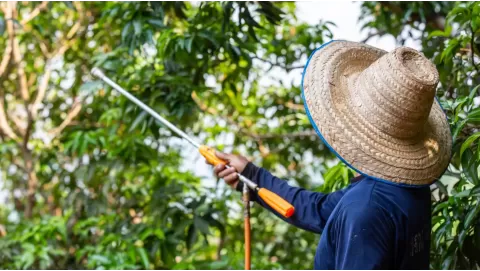
Top mouse traps for home use: Safe, effective solutions for rodent control
Mice frequently enter into houses in search of food, warmth, and a nest. They can enter through small holes or cracks around doors, windows, and pipes. Once they are in, they make themselves at home and get to work creating mischief. They gnaw on wires, wood and food containers, which can damage property and even create fire hazards.
Acting fast is crucial since mice reproduce rapidly. A single mouse can become several and lead to an infestation in a matter of months. Early mouse traps are safe and effective, and they will help eliminate the problem before it gets worse. That keeps the home cleaner, safer and more comfortable for all.
Growcycle provides various mouse traps and related products for indoor and outdoor use. These can range from classic snap traps to humane live-catch traps, to electronic traps, bait stations, and pest deterrents.
Key Factors in Choosing a Mouse Trap
The best mouse trap for home use may vary depending on the situation. Every home is unique, so one should consider safety, ease of use, how effective the trap is and where it will go. Here are a few factors to consider before purchasing a mouse trap.
Safety
Pet safe mouse traps are a must. Some traps, like snap traps or poison bait stations, can be detrimental if someone inadvertently touches them. For this reason, many prefer traps with enclosed or tamper-proof designs. These traps are safer to use around curious kids or animals.
Ease of Use
And some traps are simple to install and operate. Like snap traps featuring easy-set handles or electronic traps that only need batteries and bait. Other traps, however, may require more time and attention. A good trap should be easy to set, easy to clean and reusable, particularly if someone has never used one before.
Effectiveness
The best trap for mice in garage should be effective for catching mice within a short time. Snap traps and electronic traps tend to kill mice instantly and have a high success rate. Live traps are very effective, although they may take a bit longer to catch a mouse. Some traps are single-use, while others can catch multiple mice before needing to be reset. Which option is right may depend on the severity of the mouse infestation.
Humane Considerations
A few people do not want to kill animals. In other words, a live-catch trap is preferable. These traps allow the user to catch the mouse unharmed and free it at a later time. But they need to be checked frequently so the mouse doesn’t suffer. It is additionally important to follow local laws about when to release wild animals into public spaces.
Indoor vs. Outdoor Use
Even traps for indoor use differ from those for outdoor use. Outdoor traps must be weather-resilient so they aren’t ruined by rain or a gale. They also should be heavy or anchored so animals or the weather won’t move them. So does the kind of bait, since some bait holds up longer outdoors than others. Selecting a trap for the proper environment, in turn, increases the rate of success.
Types of Mouse Traps
There are many types of mouse traps available on the market today. Each does so in a different way, with its own advantages and disadvantages. Some traps kill mice immediately, others catch them alive. In choosing the right type of barricade, it depends on the homeowner’s needs, preferences and the severity of the problem.
1. Snap Traps
One of the oldest and most common types of traps is the snap trap. They have a bar that is spring-loaded and snaps down upon a mouse touching the bait.
- Pros: Fast-acting, inexpensive, available in stores.
- Cons: Can be dangerous if not shaken out of the hands. They can be difficult to set or unpleasant to clean up after.
That is perfect for someone who just needs a fast and simple solution. They take the snap trap. They function properly indoors, as when mice follow walls or corners.
2. Electronic Traps
Electronic traps, usually powered by batteries, deliver a rapid electric shock that kills the mouse upon entering the trap.
- Pros: They’re fast, mess-free, and usually have a no-touch, no-see design.
- Cons: They’re pricier than snap traps, and they require batteries to operate.
These traps are good options for someone who wants to avoid a mess or doesn’t want to see the mouse. Mouse traps for indoors are also safe to use for mouse traps with the right setup.
3. Live-Catch Traps
Consider using live traps that capture the mouse unharmed. The mouse enters a little box, or cage, and a door slams behind it.
- Pros: Humane and reusable. A good option for people who prefer not to kill the mouse.
- Cons: The trap needs to be checked frequently, and the mouse should be released some distance away so it doesn’t come back.
Live traps are better for light infestations and those committed to animal-friendly methods.
4. Glue Traps
Glue traps are flat boards covered with a sticky surface. And when a mouse walks across it, it gets stuck and cannot escape.
- Pros: Inexpensive and easy to install in cramped places.
- Cons: Viewed as inhumane by many. The mouse might die a slow death. It can also accidentally catch pets or other animals.
These traps are not recommended for use in homes with pets or children. In some areas, they are discouraged or prohibited.
5. Bait Stations
Bait stations are enclosed containers that keep poison placed inside. They go inside, eat the bait and exit. The poison works later.
- Pros: Its enclosed design protects the bait from children and pets. You can kill multiple mice in one go.
- Cons: Mice can die in difficult-to-reach places. There’s also the danger of secondary poisoning to pets or wildlife.
Because of their widespread nature or for areas such as garages where the risk of having multiple mice is higher, bait stations are often used in outdoor areas.
Top Recommended Mouse Traps
There are a lot of the best mouse trap for home use to choose from, but some are better and safer and easier to use than others.
1. PIC Easy Set Plastic Mouse Trap
This snap trap is also easy to use and made out of durable plastic. It is designed in a pack of two while considering safety. One-touch setting allows the trap to be placed without fingers getting near the snapping bar. It features a deep bait well where peanut butter or other bait stays secure, so people don’t need to re-bait it as regularly. If looking for a quick, clean, and reusable solution, this is a great option.
2. GONZO Rodent Pro Mouse Trap
This Mouse Trap from GONZO is small but powerful. It uses a strong spring to kill mice quickly and humanely. The trap can be reset easily and is safe to handle as there’s no need to touch the mouse. It works well both indoors and outdoors, and is a good option for homes that deal with frequent mouse problems.
3. Victor Quicket Mouse Trap (2-Pack)
To ensure safe and simple usage this trap is designed. It uses a “Safe Set” design to help prevent unwanted triggers. The bait is held under a small hood until the mouse goes inside after it. A hand or foot can be pressed to set the trap. It’s also not as visible, hiding the dead mouse from sight and making the cleanup less gruesome. This trap is perfect for those who prefer a low-contact and no-mess method.
4. Catchmaster Metal Multi-Catch Mouse Trap
This is a live-catch trap that can hold as many as 12 mice at one time. It doesn’t involve glue or poison, so it’s a humane way to trap mice. This metal trap is reusable and does not need frequent resetting. It’s particularly useful in high-activity regions like garages or basements where mice tend to be active. Release the mice safely if that is the user's wish or dispose of them.
5. GONZO RodentPro Glue Trap Inserts
The GONZO RodentPro Glue Trap Inserts are an easy option for those who like to use sticky traps. These inserts use non-toxic glue and go into a reusable plastic frame. They trap mice, rats and other small pests without springs or moving parts. Though simple to use, care should be taken when using glue traps, which the researchers warn can cause suffering and injury to pets and children.
Placement and Setup Tips
Even the best mousetrap for home use won’t be effective if not set up properly. Homeowners need to follow some savvy tips to catch mice fast and safely. Good placement and the right bait can be the difference in catching a mouse quickly.
Place Traps Along Walls
When moving, mice tend to hug the walls and the edges. They do not typically cross open spaces. That’s why traps are best placed along walls, behind furniture or in corners where mice are likely to travel. The trap should be placed facing the wall, with the bait end next to the wall, so mice run right into it.
Set Traps Near Entry Points
Look out for indications of where the mice are entering. Learn about common entry points for mice, including gaps around pipes, cracks in walls, and openings around doors and windows. Placing traps close to these locations will help get mice before they travel deeper into the home.
Use the Right Bait
Mice are inquisitive and searching for food at all times. Here are a few of their favorite snacks:
- Peanut butter (sticky and strong-smelling)
- Chocolate
- Oats or grains
These baits are easy to find and work well in most traps. A small amount is enough, just a pea-sized drop of peanut butter will do.
Wear Gloves When Handling Traps
Mice have an excellent sense of smell. They especially will avoid a trap if they smell humans on it. Try to avoid this by wearing disposable gloves when setting or placing traps. It also shields the user from germs and facilitates clean-up.
Try Multiple Traps
In most cases, using more than one trap increases the chance of catching mice faster. Place several traps in different areas, especially if the infestation is large. Traps should be checked daily and reset as needed.
Safety and Ethical Considerations
Mouse traps are useful devices when deployed properly and they are handled responsibly. But when setting traps around the home, it’ll also be important to protect children, pets and even the mice themselves. With a few well considered precautions, homeowners can safely address rodent concerns without creating injury or violating area laws.
Keep Traps Away from Children and Pets
Some traps, particularly snap traps and bait stations, can injure curious children or pets if they touch or play with them. Traps should be hidden in places such as behind appliances, under furniture, or inside cupboards and out of reach of little hands and paws. Opting for tamper-proof or enclosed trap designs provides added safety.
Check Live-Catch Traps Often
If using live-catch traps, it’s imperative to check them at least twice a day. Leaving a mouse in a trap too long can lead to stress, dehydration or injury. It helps ensure the mice are released quickly and humanely. Traps should never be set and left to their own devices.
Follow Local Laws for Relocating Mice
If people catch a mouse, releasing it may sound nice, but it needs to be done the right way. Many jurisdictions also have specific rules governing where and how wild animals can be released. It could cause infestations near homes if released too closely, and in some places, like parks or nature reserves, and it’s illegal. Always consult local wildlife regulations before relocating any animal.
Maintenance and Disposal
Once the trap has been set, one needs to know well how to catch a mouse quickly so that the place remains safe and healthy. Good maintenance makes traps last longer and stronger. Safe disposal and frequent cleaning also minimize health risks.
- Wear Gloves: After catching a mouse, wear protective gloves to touch the trap. This shields the user from germs and exposure to blood and other body fluids.
- Disinfect After Use: When the mouse has been removed, the trap should be disinfected with a household cleaner or a mixture of bleach and water. Always wash hands thoroughly after completion of the process.
- Dispose of Dead Rodents Properly: Dead mice need to be disposed of in compliance with local health or waste guidelines. In most places, they are to be put in a sealed plastic bag and then thrown in the outdoor garbage bin.
- Check Traps for Damage: Traps can be damaged over time. Snap traps can lose tension, glue traps can dry up and electronic traps can stop working. Regularly check traps for rust, cracks or damaged parts.
- Store Traps Safely: If traps are not in use, clean and dry the trap, and store the trap in a sealed container in a dry place, out of reach of children, pets, and food storage areas. Maintaining traps ensures they’ll be ready for use when needed.
FAQs
What is the most effective home mouse trap?
Snap traps are the most effective, followed closely by electronic traps. They act fast and have a high success rate.
Are electronic mouse traps safe for pets and kids?
Most electronic traps are contained and triggered only inside the chamber, so they’re safer than open snap traps. They should never, however, be within reach of young children or pets.
How often should traps be checked?
Traps should be checked at least once a day. This helps remove any caught mice quickly and allows the user to reset or re-bait the trap if needed.
The Bottom Line
Mice can create big problems in any home. They damage things, spread germs, and multiply very quickly. That’s why it’s important to use the right mouse trap and act fast.
There are many types of traps to choose from, including snap traps, live-catch traps, and electronic traps. Each type works in a different way, so it's important to choose one that fits the home and the needs of the people living there. Good trap placement, proper bait, and regular checks can help catch mice more effectively.
With the right trap and a little care, anyone can safely and responsibly get rid of mice. Explore Growcycle for a variety of mouse trap reviews and rodent control tools that work well both indoors and outdoors. These products can help keep the home clean, safe, and free of unwanted pests.
Disclaimer: This material is for informational purposes only and should not be relied on for legal, medical, financial, or any other form of professional advice.





















